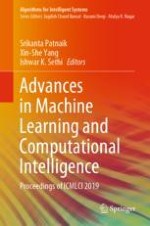This book gathers selected high-quality papers presented at the International Conference on Machine Learning and Computational Intelligence (ICMLCI-2019), jointly organized by Kunming University of Science and Technology and the Interscience Research Network, Bhubaneswar, India, from April 6 to 7, 2019. Addressing virtually all aspects of intelligent systems, soft computing and machine learning, the topics covered include: prediction; data mining; information retrieval; game playing; robotics; learning methods; pattern visualization; automated knowledge acquisition; fuzzy, stochastic and probabilistic computing; neural computing; big data; social networks and applications of soft computing in various areas.
